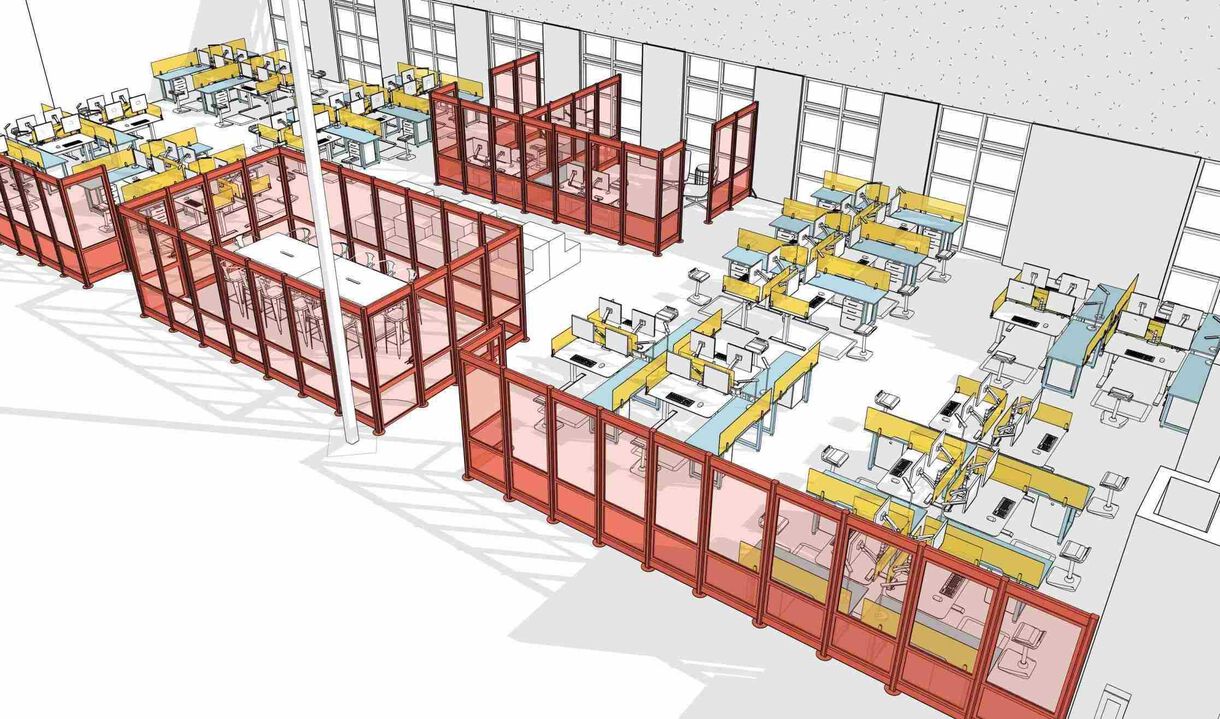PREPARING YOUR OFFICE FOR THE NEW NORMAL
Vari® CEO Jason McCann shares ideas and solutions for the new post-pandemic workspace.
5 minute read
I’m sitting at home as I write this, missing the bustle of smiling people, the gentle buzz of overhead music, and the scent of freshly brewed coffee that used to greet you in our lobby coffee bar. But most of all, I’m simply missing the energy of the people.
These were constants of the Vari Headquarters. In just the last few weeks of increased working from home and social distancing, I have realized how easy it is to take those things for granted.
But while we work from home today, we must begin to think about what’s next. It’s being called the “new normal” by some, but as U.S. Surgeon General Jerome Adams said, “We know that normal is going to be a different normal, whenever we do reopen.” There are so many unknowns, but one thing is for sure, no one is going to flip a switch, and immediately have everything go back to how it was.
But what does that mean for the workspace? And, what can we do now to prepare? These questions have been on my mind quite a bit.
I believe the future of the workspace is actually “Work Spacing”
As we go back to work, the new workspace will need to be flexible, modular, and ready to space teams properly. That means rethinking everything about how our future workspaces are designed and how we use them. Here are my thoughts on what lies ahead, and what macrotrends we will see in the office.
When offices do reopen, we’ll see a rise in “distance-based workspace designs” that increase the space between people (decreasing density), and the addition of more physical barriers to the open office.
This separation will be achieved through the use of plants, privacy panels, partitions, storage, or simply more space between desks. The new norm should not include rows and rows of tightly packed 48”x24” desks.While sofa-style soft seating will not go away, I believe we will see a trend toward single person seating and more space in the cafes and break areas.
In order to reduce density and increase personal space, we will need to think about the daily headcount in the office. My prediction is that businesses who’ve previously had all employees physically present in the office will consider increasing remote work, whether that means rotating space and working from home 1-2 days per week, or making some roles permanently based from home.
Longer term, I believe we’ll see businesses leasing more space per employee while also reducing the number of parking spaces needed for those buildings.
More specifically, I believe this is how space will change and how we can start preparing now.
- This situation is evolving. Day One back in the office will very likely be different from Day 30, Day 60 and Day 90. Think about how you can flex your space as the situation changes.
- Common areas will look different. At Vari, we only have one place in the entire office that you can get coffee. It was purposefully designed as a “collision point” for spontaneous collaboration and innovation but we’re going to need to make some changes. We’re adding hand sanitizer stations as points to intercept any contact.
- Daily temperature checks become the norm. Increased fevers are a first sign of so many illnesses. In Asia, the majority of buildings you enter are automatically checking your temperature. This will likely happen here in phases as we wait for the technology to become readily available in the U.S. To begin, business may limit the number of entrances/exits and scan your temperature when you enter. As this becomes commonplace, employees may even begin to check their own temperatures at home each day before heading into the office.
- Wearing masks will become acceptable. This has been an accepted practice in Asia, and I believe will become the norm here in the US.
- Standards for sanitization will increase. Disinfectant wipes will dot every row of desks. Physical points of contact, like doors and door handles, will start to disappear as we work to create a cleaner, safer environment. When you do have door handles, coffee machines, water stations, gym equipment, etc. have hand sanitizer stations and wipes close by. The number of cleaning staff will also need to increase as we invest more in the safety of our employees. For instance, we dedicate over 1% of our staff to cleaning by having 2 full time housekeepers during the day and 2 more at night for a company of more than 350 employees.
- Less physical contact, more empathy. While we probably won’t be shaking hands as much, if at all, we’ll find new ways to celebrate each other. I hope this also increases our appreciation for the front-line employees – receptionists, logistics, housekeeping, installation teams – empowering them with more cleaning supplies including masks, gloves, apparel, training, etc. I also believe that the trend will shift to increased paid time off for illness, so we don’t punish people for being sick nor encourage them to work when they should not.
It was Benjamin Franklin who said, “An ounce of prevention is worth a pound of cure.” If Work Spacing your office can help your employees be healthy and productive, then I believe it’s worth considering. My advice is to take advantage of the empty office now and prepare for the workdays ahead.
Get Active Workspace Updates
Sign up for our newsletter and get the latest resources and product news.

